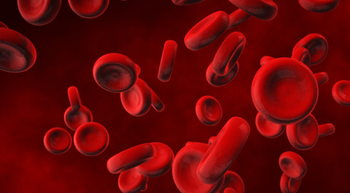
Linvoseltamab Gains FDA Accelerated Approval In R/R Myeloma
The FDA has given accelerated approval to the BiTE, linvoseltamab, for use in the fifth line of therapy for relapsed/refractory multiple myeloma.
The FDA has granted accelerated approval to linvoseltamab-gcpt (Lynozyfic) for the treatment of adult patients with relapsed or refractory multiple myeloma following at least 4 previous lines of therapy including a proteasome inhibitor (PI), a CD38-targeting monoclonal antibody, and an immunomodulatory agent (IMiD).1
The CD3 bispecific T-cell engager (BiTE) was evaluated in the open-label, multi-center, multi-cohort LINKER-MM1 trial (NCT03761108); these trial results are what supported linvoseltamab’s current approval. Linvoseltamab targets the B-cell maturation antigen (BMCA).
Efficacy of Linvoseltamab in Multiple Myeloma
The objective response rate (ORR) of patients receiving linvoseltamab was 70% (95% CI, 59%-80%), as assessed by blinded independent review committee per International Myeloma Working Group criteria. Additionally, 45% achieved a complete response (CR) or better, and patients had a 0.95-month median time to first response (range, 0.5-6), according to a press release from Regeneron, the drug’s developer.2
Additionally, the estimated duration of response (DOR) was 89% (95% CI, 77%%-95%) at 9 months and 72% (95% CI, 54%-84%) at 12 months. Median DOR was not reached (95% CI, 12-NE). The median follow-up for responders was 11.3 months, according to the FDA.1
Safety Warnings for Linvoseltamab
Linvoseltamab’s prescribing information contains a warning for potentially fatal cytokine release syndrome (CRS) as well as immune effector cell-associated neurotoxicity (ICANS), according to the FDA’s announcement. As of the BiTE’s approval, no prescribing information is available on the government agency’s drug database.
Further, 46% of patients receiving the recommended dose of linvoseltamab experienced CRS, and 54% of patients reported neurologic toxicities including ICANS. For less than 1% of patients, CRS was grade 3, and for 8% of patients, neurologic toxicities were grade 3 or 4.
In a conversation with Oncology Nursing News on the use of T-cell engagers in multiple myeloma, Nick Barkemeyer, PA-C, MMS, who specializes in bone marrow transplant at the Centennial Cetner for Blood Cancers Clinic in Nashville, Tennessee, explained that educating patients about the risk of CRS and ICANS is key in ensuring that patients feel safe receiving therapy.
“[CRS and ICANS aren’t] a permanent issue. … It’s about being honest and open with them where these things can occur,” said Barkemeyer. “We explain that with any of these symptoms, it’s best to make your provider aware so you can get ahead of it and then manage it better.”
The adverse events (AEs) most commonly reported in patients receiving linvoseltamab, which were observed in at least 20% of patients, were musculoskeletal pain, CRS, cough, upper respiratory tract infection, diarrhea, fatigue, pneumonia, nausea, headache, and dyspnea.2
Due to its safety concerns, linvoseltamab is only available under a Risk Evaluation and Mitigation Strategy (REMS) restricted program called the Lynozyfic REMS.
In addition to CRS and neurologic toxicities, linvoseltamab is associated with a risk for infections, neutropenia, hepatotoxicity, and embryo-fetal toxicity.
How is Linvosetlamab Administered?
Linvoseltamab’s recommended dose includes step-up doses of 5 mg, 25 mg, and 200 mg, administered intravenously. Following step-up dosing, patients should receive 200 mg of linvoseltamab weekly for 10 doses, followed then by 200 mg biweekly.
If patients sustain a “very good partial response” or better at week 24 or beyond and have received 17 doses or more of 200 mg, the frequency of doses is lowered to 200 mg every 4 weeks.
“The FDA approval of [linvoseltamab] represents meaningful progress for the multiple myeloma community. Lynozyfic demonstrated early, deep and durable responses in heavily pre-treated patients, which I saw firsthand in clinical trials,” said Sundar Jagannath, MD, Network Director of the Center of Excellence for Multiple Myeloma at Mount Sinai in New York City, New York. “Lynozyfic has a convenient response-adapted dosing regimen, which provides the potential to extend time between doses. This is a significant patient-centric advancement that could help reduce treatment burden.”
Jagannath was also an investigator on LINKER-MM1.
References
- FDA grants accelerated approval to linvoseltamab-gcpt for relapsed or refractory multiple myeloma. FDA. July 2, 2025. Accessed July 2, 2025. https://www.fda.gov/drugs/resources-information-approved-drugs/fda-grants-accelerated-approval-linvoseltamab-gcpt-relapsed-or-refractory-multiple-myeloma
- Lynozyfic™ (linvoseltamab-gcpt) receives FDA accelerated approval for treatment of relapsed or refractory multiple myeloma. Regeneron. July 2, 2025. Accessed July 2, 2025. https://www.globenewswire.com/news-release/2025/07/02/3109328/0/en/Lynozyfic-linvoseltamab-gcpt-Receives-FDA-Accelerated-Approval-for-Treatment-of-Relapsed-or-Refractory-Multiple-Myeloma.html
Newsletter
Knowledge is power. Don’t miss the most recent breakthroughs in cancer care.






























































































